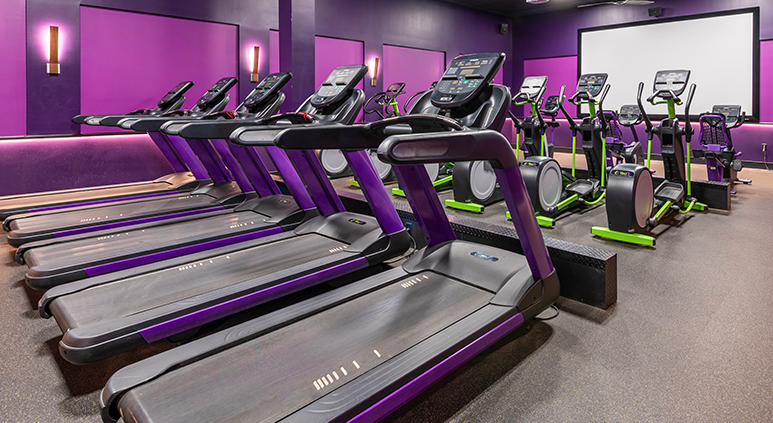In a fast-paced world where sedentary lifestyles and unhealthy eating habits have become the norm, maintaining good physical fitness and overall wellness is crucial for leading a fulfilling life. This comprehensive guide, “In Shape Fitness,” aims to provide you with the essential tools, guidelines, and strategies to achieve your health and fitness goals. Whether you’re a seasoned fitness enthusiast or just beginning your journey, this article will equip you with the knowledge to make positive lifestyle changes that will improve your well-being.
Understanding Fitness: The Key Components
In today’s fast-paced world, maintaining a healthy lifestyle has become more important than ever. One of the fundamental pillars of a healthy lifestyle is fitness. Fitness not only helps in achieving physical health but also contributes to mental well-being and overall quality of life. However, understanding fitness and creating a comprehensive plan can be overwhelming for many. This article aims to break down the key components of fitness, guiding you on how to create a personalized fitness plan that suits your needs and preferences.

>> Find Your Fitness Haven: Youfit Near Me
Creating Your Fitness Plan
Before embarking on your fitness journey, it is essential to assess your current fitness level, set realistic goals, and choose the right exercise regimen. Let’s delve into the core elements of creating your fitness plan.
2.1 Assessing Your Current Fitness Level
Understanding where you stand regarding fitness is crucial. Assessing your current physical capabilities will help you identify strengths, weaknesses, and areas for improvement. This assessment can include a variety of tests, such as measuring your cardiovascular endurance, strength, flexibility, and body composition.
2.2 Setting Realistic Goals
Setting achievable goals is vital for staying motivated and committed to your fitness plan. Define both short-term and long-term objectives that align with your abilities and desires. Whether it’s weight loss, muscle gain, or improved flexibility, make sure your goals are specific, measurable, attainable, relevant, and time-bound (SMART).
2.3 Choosing the Right Exercise Regimen
With countless exercise options available, it’s essential to choose activities that resonate with you. Consider your interests, lifestyle, and physical condition while selecting your exercise routine. Finding exercises that you enjoy will increase the likelihood of sticking to your plan in the long run.
2.4 Incorporating Cardiovascular Exercises
Cardiovascular exercises, also known as aerobic exercises, elevate your heart rate and improve cardiovascular health. Activities such as running, swimming, cycling, and dancing are excellent choices to enhance endurance and burn calories.
2.5 Strength Training for a Stronger You
Strength training is essential for building muscle mass, increasing bone density, and boosting metabolism. Incorporate resistance exercises like weight lifting, bodyweight exercises, or resistance bands into your routine to develop a stronger and more toned physique.
2.6 Flexibility and Mobility Exercises
Flexibility and mobility exercises are often overlooked but are vital for injury prevention and maintaining joint health. Yoga, Pilates, and stretching routines can improve your range of motion and reduce muscle stiffness.
2.7 The Importance of Rest and Recovery
Rest and recovery are as crucial as an exercise in any fitness plan. Giving your body enough time to recover allows muscles to repair and grow stronger. Lack of adequate rest can lead to overtraining and injuries, hindering progress. Make sure to schedule rest days throughout your week.
Nutrition: Fueling Your Body for Success
Proper nutrition is the foundation of a successful fitness journey. Understanding the role of macronutrients, micronutrients, hydration, and the use of supplements can optimize your performance and overall well-being.
3.1 Building a Balanced Diet
A balanced diet includes a variety of nutrient-rich foods, such as fruits, vegetables, whole grains, lean proteins, and healthy fats. Aim to consume a diverse array of foods to ensure you get all the essential nutrients.
3.2 Understanding Macronutrients and Micronutrients
Macronutrients, including carbohydrates, proteins, and fats, provide energy and support various bodily functions. Micronutrients, such as vitamins and minerals, are essential for proper metabolism and overall health. Understanding these nutrients’ roles can help you make informed food choices.
3.3 Hydration: The Key to Vitality
Staying hydrated is crucial for optimal physical and mental performance. Water aids in digestion, nutrient absorption, temperature regulation, and toxin elimination. Carry a water bottle with you and aim to drink an adequate amount of water throughout the day.
3.4 The Role of Supplements
While a balanced diet should provide most of the nutrients your body needs, supplements can be beneficial in specific cases. Consult with a healthcare professional before taking any supplements to ensure they are safe and suitable for your needs.
3.5 Meal Planning and Portion Control
Meal planning can help you stay on track with your nutrition goals. Prepare meals in advance to avoid unhealthy food choices when you’re busy or tired. Additionally, practice portion control to avoid overeating and maintain a healthy weight.
Mind-Body Connection: Stress Management and Mental Health
Fitness goes beyond physical well-being. Managing stress and prioritizing mental health play a crucial role in achieving overall wellness.
4.1 The Impact of Stress on Health
Chronic stress can negatively affect physical health and impair the immune system. Recognize stress triggers and adopt healthy coping mechanisms to manage stress effectively.
4.2 Incorporating Mindfulness and Meditation
Mindfulness and meditation practices can reduce stress, improve focus, and enhance emotional well-being. Incorporate techniques such as deep breathing, meditation, or yoga into your daily routine.
4.3 Prioritizing Sleep for Overall Wellness
Quality sleep is essential for recovery and overall health. Aim for 7-9 hours of sleep per night to support your fitness goals and maintain mental clarity.
4.4 Seeking Professional Support
Don’t hesitate to seek professional support if you are struggling with mental health issues or stress management. Trained therapists, counselors, or support groups can provide valuable guidance and assistance.
Staying Consistent: Overcoming Challenges
Staying consistent with your fitness plan can be challenging, but understanding how to maintain motivation, overcome plateaus, and find a supportive community can make all the difference.
5.1 Motivation and Accountability
Find your motivation by reminding yourself of the reasons you started your fitness journey. Additionally, enlisting the support of a workout buddy or joining fitness classes can help with accountability.
5.2 Dealing with Plateaus
Plateaus are a natural part of any fitness journey. When progress slows down, consider changing your workout routine or intensifying your exercises to challenge your body in new ways.
5.3 Surrounding Yourself with a Supportive Community
Being part of a supportive community can inspire and motivate you. Join fitness groups, online forums, or local fitness events to connect with like-minded individuals.
5.4 Embracing a Growth Mindset
View challenges and setbacks as opportunities for growth. Embrace a growth mindset that sees failure as a chance to learn and improve.
Tracking Progress: The Power of Data
Tracking your fitness progress provides valuable insights into your achievements and areas that need improvement.
6.1 Setting Up SMART Goals
Regularly reassess your goals and adjust them to ensure they remain realistic and attainable. SMART goals keep you focused and motivated.
6.2 Utilizing Fitness Trackers and Apps
Fitness trackers and mobile apps can monitor your exercise, nutrition, and sleep patterns. Analyzing this data can help you make informed decisions about your fitness plan.
6.3 Analyzing Your Progress
Regularly review your fitness data to identify trends, strengths, and areas for improvement. Celebrate your successes and use this information to fine-tune your fitness plan.
6.4 Adjusting Your Plan for Continued Success
As you progress, adjust your exercise routine, nutrition, and goals accordingly. Periodically challenge yourself with new exercises or activities to keep your workouts exciting.
Fitness for All: Special Considerations
Fitness is inclusive and can be tailored to different age groups, pregnant individuals, people with disabilities, and those with medical conditions.
7.1 Fitness and Aging
Exercise remains essential as you age. Focus on activities that promote balance, flexibility, and cardiovascular health to maintain independence and vitality.
7.2 Fitness During Pregnancy
Exercise can be beneficial during pregnancy but consult with your healthcare provider to ensure safety and appropriate modifications.
7.3 Fitness for People with Disabilities
Adapted exercises and workout routines can be designed to accommodate individuals with disabilities, allowing them to enjoy the benefits of fitness.
7.4 Exercising Safely with Medical Conditions
If you have a medical condition, consult with your healthcare provider before starting an exercise program. They can provide guidance on suitable activities and precautions to take.
Making Fitness Fun: Exploring Different Activities
Fitness doesn’t have to be limited to traditional exercises. Explore various activities to find what brings you joy and keeps you engaged.
8.1 Outdoor Adventures and Sports
Outdoor activities like hiking, cycling, and kayaking offer not only physical benefits but also the opportunity to connect with nature.
8.2 Group Fitness Classes
Joining group fitness classes can provide camaraderie and motivation. From Zumba to spinning, there’s a class for everyone.
8.3 Dancing Your Way to Fitness
Dance workouts are an enjoyable way to get fit and express yourself creatively. Whether it’s salsa, hip-hop, or ballet, dance to your heart’s content.
8.4 Mindful Movement Practices
Mindful movement practices, such as Tai Chi and Qigong, combine exercise with meditation to promote mental and physical harmony.
Maintaining Long-Term Success: Your Sustainable Lifestyle
Long-term success in fitness requires a commitment to a sustainable and healthy lifestyle.
>> Embrace Wellness at Youfit Dania Pointe: A Fitness Haven
9.1 Avoiding Fad Diets and Quick Fixes
Stay away from fad diets and extreme measures that promise quick results. Focus on making lasting changes to your eating habits and exercise routine.
9.2 Celebrating Achievements and Setting New Goals
Celebrate your achievements, no matter how small, and use them as motivation to set new and challenging goals.
9.3 Continuing Education in Health and Fitness
Stay informed about the latest research and trends in health and fitness to make informed decisions about your wellness journey.
9.4 Inspiring Others on Their Fitness Journey
Share your fitness journey with others, inspire them to take action, and create a positive impact on the lives of those around you.
FINAL
Understanding fitness involves addressing the key components of physical activity, nutrition, stress management, and consistency. By creating a personalized fitness plan based on your abilities, interests, and goals, you can achieve long-term success in your wellness journey. Remember that fitness is a continuous process, and finding joy in your activities is essential for maintaining a healthy and sustainable lifestyle. Embrace the challenges, celebrate the achievements, and inspire others on their path to a happier and healthier life.



